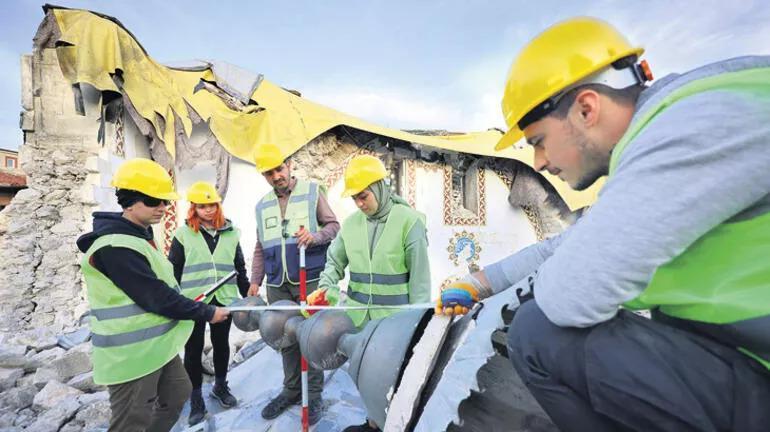
In a bid to save the historical heritage of the quake-hit provinces, experts and volunteer students are carrying out strenuous efforts to recover historical artifacts that got trapped under the rubble during the devastating quakes last month.
The quakes that struck 11 provinces in Türkiye’s south, including Hatay, claimed the lives of more than 46,000 people and destroyed hundreds of thousands of buildings.
In addition to the buildings, historical mosques, hammams and fountains were also heavily affected.
To recover the historical legacies of the past, Culture and Tourism Ministry took action and formed a committee.
This committee established a unit to work on the inventory of the qualified materials in the heavily damaged historical buildings in some provinces and districts, especially in Hatay, and to form a basis for restoration.
The unit started its work under the leadership of Associate Professor Dr. Muhammet Arslan, the head of the Department of Art History at Kafkas University.
With this unit, the practice of “post-quake debris archaeology” was initiated for the first time in Türkiye.
Experts are saving the historical artifacts they manage to find under the rubble with meticulous work and take them under protection, as if they have been found for the first time.
Experts working in the field enter slightly damaged buildings themselves while removing historical artifacts from the rubble.
However, a special team will come to Hatay to find artifacts in heavily damaged buildings.
The team will take preliminary measures to prevent the buildings from falling on the experts working in the field.
“Not only our people but also our cities and cultural assets were victims of the earthquakes. These artifacts are like ‘lives’ trapped under the rubble,” Arslan said.
He added that it is of utmost importance that historical documents such as inscriptions and other elements, which add identity and soul to the monuments, are safely removed from the rubble.
With these studies, Arslan and his team aim to extract materials such as inscriptions, decorated stones, mihrab and minbar decorations, columns and door wings from mosques, masjids, hammams, and fountains that have become debris.
“We will then document and inventory these artifacts and hand them over to the relevant museums,” he added.
Arslan said their team of experts comprises volunteer art historian teachers and students from different universities in the country, along with archaeologists, architects and civil engineers. Undergraduate, graduate and doctoral students also accompany their work.
The works are carried out with the permission, technical support and financing of the General Directorate of Cultural Heritage and Museums on an area of approximately 300 hectares and on around 50 structures in Antakya.
As a result of the works, it is aimed to extract about 200 artifacts.